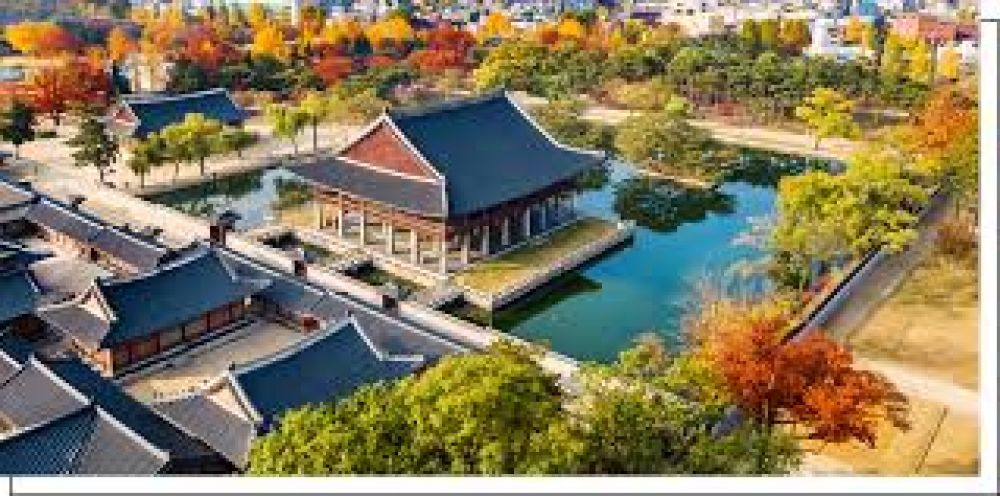

Gyeongbokgung Palace, built in 1395, is the largest and arguably the most beautiful of the Five Grand Palaces built during the Joseon Dynasty. It is located in the northern part of Seoul, South Korea. The name "Gyeongbokgung" translates to "Palace Greatly Blessed by Heaven."
The palace has gone through various periods of destruction and restoration. Originally built as the main royal residence, it was burned down during the Japanese invasions of Korea in 1592 and left in ruins for nearly three centuries. It wasn't until the 19th century that Gyeongbokgung was reconstructed, re-establishing its status as a symbol of national sovereignty and pride.
The history of modern tourism at Gyeongbokgung Palace began with efforts to preserve its cultural heritage while making it accessible to the public. After the liberation of Korea from Japanese occupation in 1945, the Korean government initiated several efforts to restore and rebuild the historical structures that were destroyed during the colonial period.
In the late 20th century, the palace became a significant tourist attraction, with extensive renovations that were aimed at restoring Gyeongbokgung to its former glory. This included the reconstruction of the grand throne hall, known as Geunjeongjeon, and the royal living quarters.
In recent years, Gyeongbokgung Palace has seen a surge in tourism, with a growing interest in Korea's historical and cultural heritage. The latest tourism trends at the palace include:
As a centerpiece of Korea's cultural identity, Gyeongbokgung Palace plays a crucial role in the tourism industry. It has become a must-visit destination for visitors to Seoul, contributing significantly to both the cultural understanding and the economic aspect of tourism in South Korea.
The continued efforts to preserve and promote Gyeongbokgung Palace are not only preserving Korea's past but are also showcasing the intricate beauty of Korean culture to the world, ensuring that the history of tourism at this storied palace will continue to evolve and flourish for generations to come.